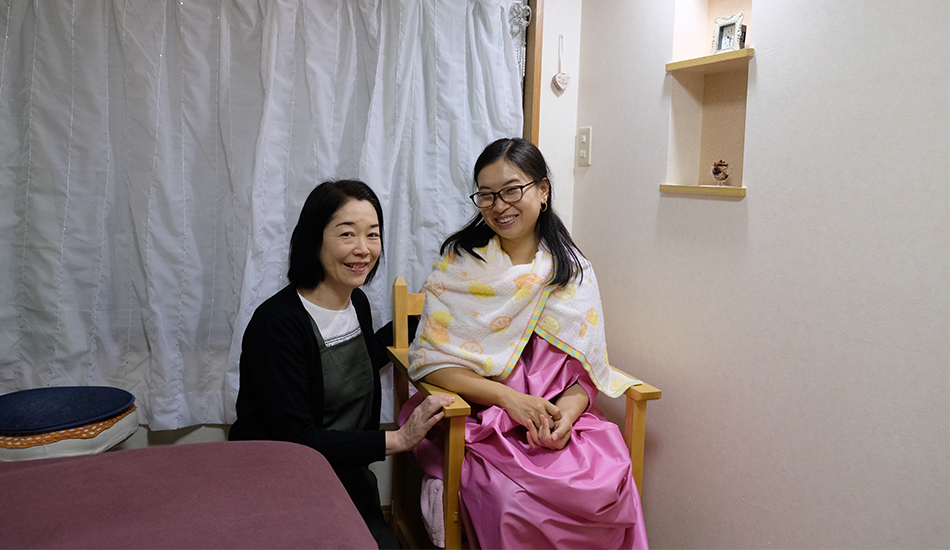Warmth to Carry You Through the Winter
Published: December 14, 2018
Like it or not, winter has arrived in Tokyo.
With temperatures that stay mostly above freezing, Tokyo winters are certainly less taxing than those I’ve known in Canada—or so I thought. Unfortunately, I’ve had to learn over the past couple of years that underestimating these “mild” temperatures is a mistake, and that Japanese winters can be pretty brutal.

So my interest was piqued by the concept of “onkatsu”, a trend that encourages people to help keep their bodies warm by drinking hot liquids, wearing extra layers, massaging and stretching their extremities, and various other methods. Keeping warm encourages good blood flow, and good blood flow is essential in preventing chills—a common condition called “hie-sho” in Japan.
“Hie-sho”, or, as best as I can translate it, “getting chilled”, isn’t really a concept that’s gotten a lot of attention in Western medicine. But in Asia, being prone to chills is linked to: a lower resting body temperature resulting in a weaker immune system, sluggish blood flow, bloating, various degrees of fatigue and/or pain, and other unpleasant conditions. Doing some “onkatsu” to keep myself warm this season seems like a good idea!
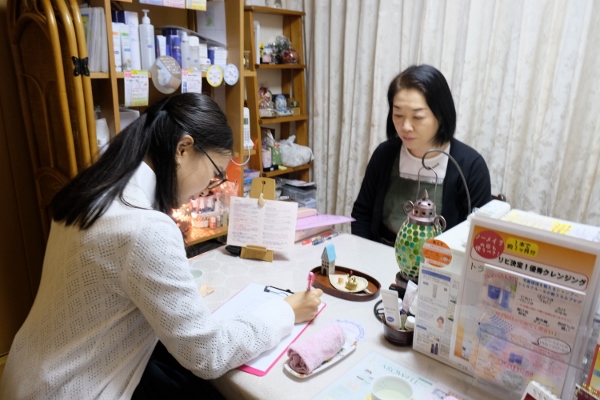
To this end, I visited Prim Rose, a private salon in Kiyosumi-shirakawa, Koto City, to learn a bit more about ways to keep warm.
Prim Rose is a private home salon that offers various types of massages and aromatherapy, ranging from simple facials to reflexology and full-body care. But the treatment I chose is something a little different, called “yomogi-mushi”. Yomogi-mushi is also known as “Japanese mugwort steam treatment”. It’s a popular menu item thanks to its low cost per session (3500 yen), the relaxing effect it has on people, and most importantly, for its ability to deeply warm the body.
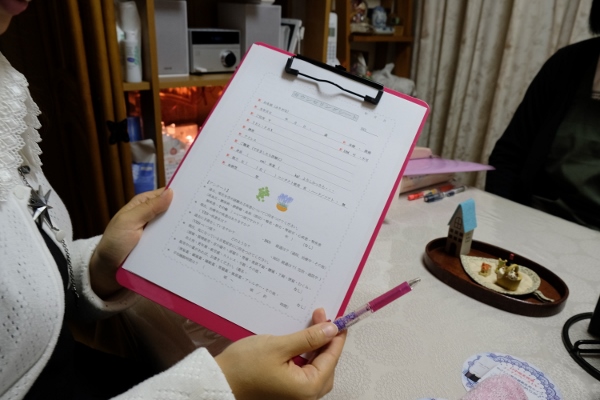
Every session for a Prim Rose first-timer begins with a survey to assess your current condition.
After you’ve answered, Ms. Hayakawa, the owner, will talk to you about your concerns. She is extremely gentle and attentive, and I felt really safe talking to her despite it being our first meeting (*^^*)
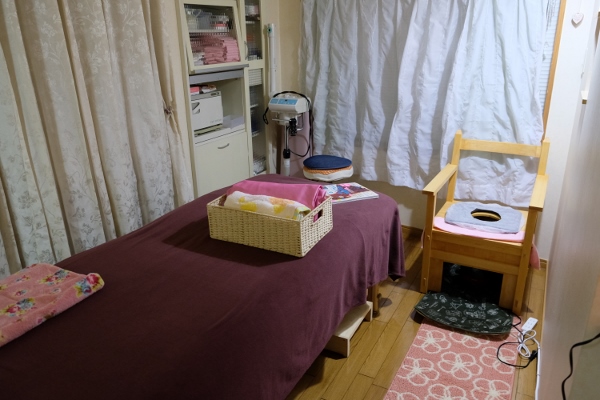
Then, on to the backroom! Next to the massage bed is the yomogi-mushi chair.

And this is yomogi, Japanese mugwort. It may not look much in this form, but yomogi is a very popular ingredient in Japan. It’s often used in cooking; fresh yomogi picked in the spring is a crucial ingredient in kusamochi—a type of confectionary. The yomogi gives the mochi (glutinous rice cake) a fresh green colour, and imparts on it a fragrant flavour which many people associate with spring. Yomogi is also used to brew tea, and has been long acknowledged as a curative against stomach problems, anaemia and chills.

To partake in yomogi-mushi, I had to first take off my regular clothes and don a tent-like cover…

Like so! It felt a bit like wearing a shower curtain. The covering has openings for your arms to stick out, which you can zip closed if you prefer.

Then, I was told to sit on the yomogi-mushi chair, where extra towels were wrapped around me.
The chair has a circular opening in the middle of its seat, under which is placed the steamer. “Don’t sit directly on the opening, since the steam can be very hot,” warned Ms. Hayakawa. Instead, she said to sit behind it, and extend my legs up or around over the hole.
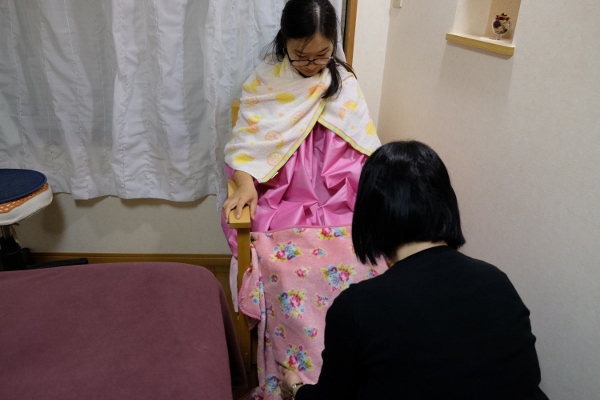
After lighting the steamer up, Ms. Hayakawa gave me a foot bath to get started. Warming the foot to aid with blood-flow is a popular treatment. Even as she was doing this, I could feel the steam beginning to fill up inside the cover, and the faint, fragrant, green smell of yomogi began to drift around the room.
A session lasts around 30 minutes, during which time people read books or play on their phones (or nap!) to pass the time. Ms. Hayakawa provides customers with a glass of geyser spring water as well, as keeping hydrated is important during the process.
“The goal is to be warm without sweating a lot,” she advised, before leaving me to my 30 minutes.
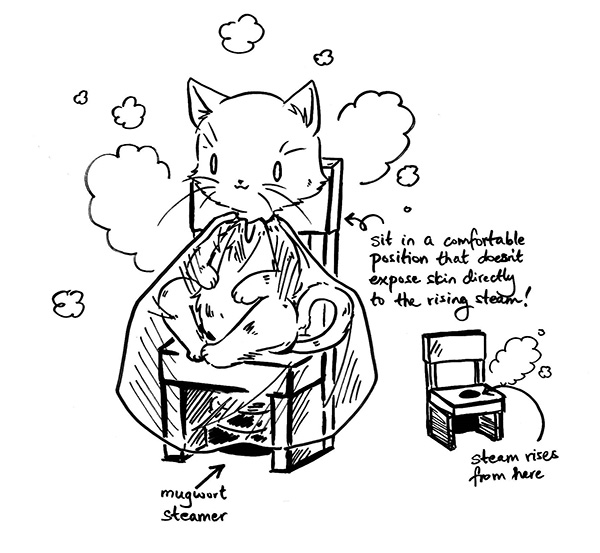
It can take a bit of trial and error to find the best position to sit during the treatment, but I personally found it most comfortable to sit cross-legged, with my feet up on the chair and my knees resting against the arm rests. Here is a reference illustration, featuring a cat. The most important thing is not to cover the hole. In addition, the heat from the steamer can be adjusted to suit your tolerance level, if you feel it’s getting too hot.

When time was up, I toweled off and got back into my clothes, feeling warmed through and through! Ms. Hayakawa and I chatted some more over herbal tea to finish the session. “Doing yomogi-mushi regularly can be really helpful in relieving symptoms caused by the cold weather, as well as general fatigues and aches,” Ms. Hayakawa said. She also told me that appointments to Prim Rose can all be made online—a nice perk for those of us who aren’t particularly fond of phone calls.
As the weather continues to get colder here in Tokyo, many of us will look for ways to keep warmer for longer. Those prone to chills can give yomogi-mushi a try—it just might be the solution!
Story and Illustration by Xianru Shen(Koto City Office Coordinator for International Relations)

